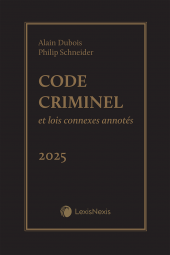On Trial - Advocacy Skills Law and Practice, 2nd Edition
One Year Subscription Only Terms
Subscribers receive the product(s) listed on the Order Form and any Updates made available during the annual subscription period. Shipping and handling fees are not included in the annual price.
Subscribers are advised of the number of Updates that were made to the particular publication the prior year. The number of Updates may vary due to developments in the law and other publishing issues, but subscribers may use this as a rough estimate of future shipments. Subscribers may call Customer Support at 800-833-9844 for additional information.
Subscribers may cancel this subscription by: calling Customer Support at 800-833-9844; emailing customer.support@lexisnexis.com; or returning the invoice marked 'CANCEL'.
If subscribers cancel within 30 days after the product is ordered or received and return the product at their expense, then they will receive a full credit of the price for the annual subscription.
If subscribers cancel between 31 and 60 days after the invoice date and return the product at their expense, then they will receive a 5/6th credit of the price for the annual subscription. No credit will be given for cancellations more than 60 days after the invoice date. To receive any credit, subscriber must return all product(s) shipped during the year at their expense within the applicable cancellation period listed above.
Détails des produits
This practical guide helps you develop winning courtroom techniques and strategies. From the opening address to the final argument, it provides:
- authoritative solutions to potential legal and practical problems that may arise during trial
- useful examples of how to elicit evidence and damage witness credibility
- detailed instruction on how to conduct examinations-in-chief, cross-examinations and arguments
- methods of successfully preparing witnesses for trial.
This new edition features a number of new and reorganized chapters including new material on:
- The selection and presentation of a credible - and winning - theory of a case
- The selection, organization and use of documents at trial
- Demonstrative evidence - admissibility, laying the proper foundation, distinguishing between demonstrative evidence and demonstrative aids and the admissibility of videotapes, computer reconstruction and models
- Objections - when to object and when not to, timing and forms of objections
- Plus a major new section specifically devoted to expert witnesses - including who qualifies and the trial court's "gatekeeper" function, the subject matter of expert testimony, retaining and preparing expert witnesses and direct and cross-examination of experts
Click here to read a review of this title
Table des matières
Chapter 1: Introduction
PART I: THEORY OF THE CASE
Chapter 2: Theory of the Case and Related Themes
PART II: DEMONSTRATIVE EVIDENCE AND EXHIBITS
Chapter 3: The Organization and Use of Documents at Trial
Chapter 4: Demonstrative Evidence
PART III: OPENING ADDRESS
Chapter 5: The Law Governing Jury and Non-Jury Addresses
Chapter 6: The Plaintiff's Opening Address
Chapter 7: The Defendant's Opening Address
Chapter 8: Non-jury Openings
PART IV: DIRECT EXAMINATION
Chapter 9: Preparation of a Lay Witness to Give Evidence at Trial
Chapter 10: Examination-In-Chief: The Law
Chapter 11: Refreshing the Memory of a Witness
Chapter 12: The Conduct of a Direct Examination
PART V: CROSS EXAMINATION
Chapter 13: The Right to Cross-Examine
Chapter 14: The Rule in Browne v. Dunn
Chapter 15: The Boundaries of Cross-Examination
Chapter 16: Limitations on the Right to Cross-Examine
Chapter 17: The Collateral Facts Rule
Chapter 18: Cross-Examination of a Party's Own Witness: Hostility, Adversity and Prior Inconsistent Statements
Chapter 19: Cross-Examination of an Adversary's Witness Upon a Prior Inconsistent Statement
Chapter 20: Cross-Examination Upon Previous Convictions
Chapter 21: Obtaining Documents at Trial in Aid of Cross-Examination
Chapter 22: Executing a Winning Cross Examination
PART VI: EXPERT WITNESSES
Chapter 23: Law Regarding Expert Witnesses
Chapter 24: Preparation of an Expert Witness
Chapter 25: Expert Witnesses: The Qualifying Process
Chapter 26: The Direct Examination of an Expert Witness
Chapter 27: Cross-Examination of Experts
PART VII: RE-EXAMINATION
Chapter 28: Re-Examination: The Abused Art
Chapter 29: Objections
Chapter 30: The Law Governing Closing Addresses
Chapter 31: Closing Addresses
Produits liés
-
 Code criminel et lois connexes annotés, édition 2025 (Volume 1) + Guide du praticien (Volume 2) + Livre électroniqueDate de sortie: August 13, 2024175,00 $
Code criminel et lois connexes annotés, édition 2025 (Volume 1) + Guide du praticien (Volume 2) + Livre électroniqueDate de sortie: August 13, 2024175,00 $ -
 JurisClasseur Québec - Collection Droit pénal495,00 $
JurisClasseur Québec - Collection Droit pénal495,00 $ -
 Thema – Les procès criminels : Modes et procéduresDate de sortie: October 05, 202385,00 $
Thema – Les procès criminels : Modes et procéduresDate de sortie: October 05, 202385,00 $
 Lexis Nexis
Lexis Nexis 